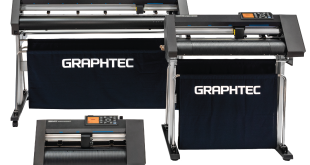
Chris Govier, president of Kornit Digital EMEA, explains why sustainable, on-demand production provides the opportunity for reshoring operations.
A recent article in Vogue Business titled ‘Could Digital Printing Ease Supply Chain Disruptions’, observes the trend of bringing major manufacturing operations back to EMEA, briefly seen as a stopgap measure to mitigate complications arising from the pandemic economy.
It now appears to be part of a broader strategy for long-term operational viability, resiliency, value, and speed.
While high labour costs have long been used to justify offshore production, volatile supply chains, shipping complications and costs, tariffs, perceived sociopolitical instability, and other factors – including the proliferation of automation technologies that necessitate fewer laborers to operate in general – have made reshoring a practical, profitable, and ultimately safer proposition.
According to the article, “Digital printing can streamline production for fashion brands via a process of nearshoring, allowing garments and textiles to be produced on-demand. In the past, this sort of technology was used as an alternative to screen printing for T shirts. Today, the digital printing sector is eyeing an opportunity to pitch its innovations to the wider fashion industry as it looks for ways to get around supply chain delays.”
News to some
While this development may come as news to some, here in the fashion and textiles world we’ve been witnessing this trend up close and personal. Indeed, the economics of bringing production closer to the end consumer – immediate delivery that negates the need for large stock and vulnerable supply chains, the ability to react to consumer trends in real time, the eco-friendly aspect of a streamlined process, and the mitigation of troublesome external factors in general – underlies our Kornit X Global Fulfiller Network, which effectively nearshores production for every market.
Many of our partners and customers are evolving their businesses based on localising their operations, even in highly regulated and high-cost regions that would not, on first look, appear to be logical production sites. Yet, efficient, on-demand production technologies make these models highly profitable.
One of the greatest attributes of localised, on-demand fashion and textile production models is that the strategy is entirely modular; it can be replicated to mitigate risk, foster operational agility and versatility, and deliver profitability anywhere. Perhaps no Kornit partner exemplifies this proposition better than Fashion Enter, which employs both Kornit DTG and direct to fabric production systems to educate, empower, and fulfill the needs of established and aspiring brands and retailers in the UK.
That they can successfully do so within the city of London, the high-cost cradle of the Industrial Revolution itself, demonstrates how ‘Make It British’ can also mean ‘make it sustainably, make it with superior quality, make it in any quantity, make it without limitations, make it brilliant – and make it cost-effectively every time’.
Game-changing technologies
Regardless of the challenges we face, game-changing technologies have provided a solution in times of need. In the past 40 years, technological advancements have made considerable gains in areas of alleviating poverty, improving healthcare and wellness, revolutionising the ways we communicate (and shop), increasing our quality of life, and far more. Where simple economics once drove manufacturers to solve their problems by simply moving their operations to far-flung locations where both labour and space were cheap and plentiful, those committed to developing sustainable, efficient, highly automated, and versatile production technologies have made it more profitable than ever to bring those operations back home. Unpredictable global market dynamics, like any number of risks and complications we’ve seen these past few years, have compelled business leaders to embrace the wisdom of doing so.
In a recent Bloomberg article, GE Appliances CEO Kevin Nolan summed up the situation succinctly: “I’ve always said, this is just economics, people are going to realise that the savings they thought they had (from offshoring operations) aren’t real, and it’s going to be better and cheaper to make them here.”
 Printwear & Promotion The Total Promotional Package
Printwear & Promotion The Total Promotional Package




